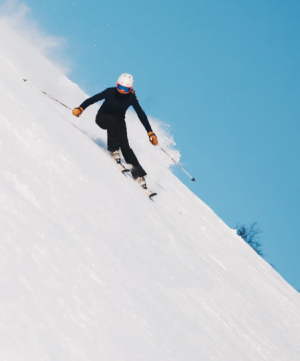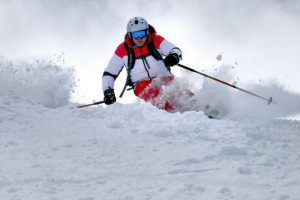Wearing the boots, attaching them to the skis, and clutching onto the poles do not take much effort, what takes a lot of effort is what lies ahead of that. The skiers are bound to have a fit physique and stable medical conditions to hit the snowy surfaces with those goggles on. Every skier should make sure to have minimum fitness to keep them stable throughout the skiing. The skiers or frequent visitors might keep in mind to keep themselves fit for this adventure, but not casual visitors or vacationers. But it is always best to keep yourselves fit, not just for the sport but to lead a healthy life ahead. Considering health factors that are to be maintained for the skiing experience, there are a lot of exercises and workout routines that one could adopt to stay in shape for the adventure of a lifetime. Taking up these health and fitness tips helps you to stay fit for the sport; alongside which the sport itself offers a lot of health benefits. The sport is just like a coin with two sides to it; benefits heading the coin’s engravements and the risks or negatives entailing it. Skiing can take you on a solo ride through the edges of those snowy gorges, but always make sure to slide back to the starting point, as many pits of risk await to suck life into it.

Some steps to keep you fit for the sport
Leg Blasters
It is a combination of 4 exercises, which include squats, jump squats, jump lunges, and alternating lunges.
Russian twists
By keeping your knees and hips at 90 degrees, lean forward and hold some weight at a distance from your chest. By lifting your feet off the floor, rotate your body to either direction and touch the weight on the floor.
Lateral Hops with Tuck Hold
Jump with small leaps, and also not too high, since in the skiing sport jumping is not usually over heights, but small bounds. Concentrate on jumping over sandbags laterally, back and forth quickly.
Front squats
With 2 weights held close to your jaw on both sides, stand with your bottom to the ground and back straight. Do squats and breathe out when standing back up from the squat and breathe in when squatting down.
Single leg deadlifts
Hold a weight in your hand and extend it, as your body is in an upright position. From that position extend one leg backward and stand on the other leg with a slight bend on it to balance the weight and lean forward with your trunk in line with your extended leg. Repeat these steps, by breathing in and out as you lean forward and back to the upright position respectively.

Pros and Health benefits of skiing
Convenience
To ski, the initial walk to the lift and traveling by these lifts over distances is the tiring part, but what follows is convenient with the proper guidance and grooming. But with those initial grooming sessions, negotiating the sharp curves and steep mountains would not seem so easy, but with time the sport gets interesting and engaging with high-class facilities provided for all the skiers and visitors. Visit skiweekends.com for the best skiing holiday spots and packages.
Cardiovascular health
While skiing, the contribution towards the sliding movement is not only of gravity, but also involves the physical efforts of the skiers, which is why it requires minimum health conditions and fitness. The forward and downhill movements give your heart proper and regular beating rates. Walking up the slopes also develops your cardiovascular health.
Balance improvement
This sport develops your balance and core strength; as you ski through the snow and sharp turns, you constantly keep balancing your body and this activity also strengthens your core.
Leg muscles strengthening
Just like in the suggested workout sessions, the squat is one integral part of it, since the movement through the snow on the skis is the movement of muscles involved in the squats. These movements strengthen your leg and overall body muscles and physique.
These movements that take place in your body while you ski on those mountains are also good for your bones and joints, which also develop your flexibility and help you in losing weight.

The risks that entail this sport
The risks and dangers that this game poses are no less in number than the benefits that it has to offer, rather it could be much more. The risks or dangers arise from unfortunate incidents where the gear used could be faulty or the carelessness of the skier by rushing through these sharp turns and snowy mountains. This is why it’s so important to wear safety gear, like these outdoor master snow helmets, to protect yourself from collisions, falls, and even extreme temperatures.
The changing weather conditions which could get worse can pose a huge risk to the skiers. Following these could be other factors that could pose risks, which include collisions with other skiers, the undulated surfaces with the rocks, trees, and other objects on the way, the surface conditions with the snow falling patterns and varying terrains on the way, skiing beyond the set limits and skiing beyond one’s own ability.
All these risks and dangers are possible in the sport of skiing, so always have proper safety gear on and also follow the guidelines. Also, follow the groomer’s instructions and follow the paths, and ski within the limits of the mountain and also within one’s physical saturation. Keep yourselves safe while trying the sport, so you just don’t limit yourself to this sport alone, but live along with all the health enhancements this sport offers.
